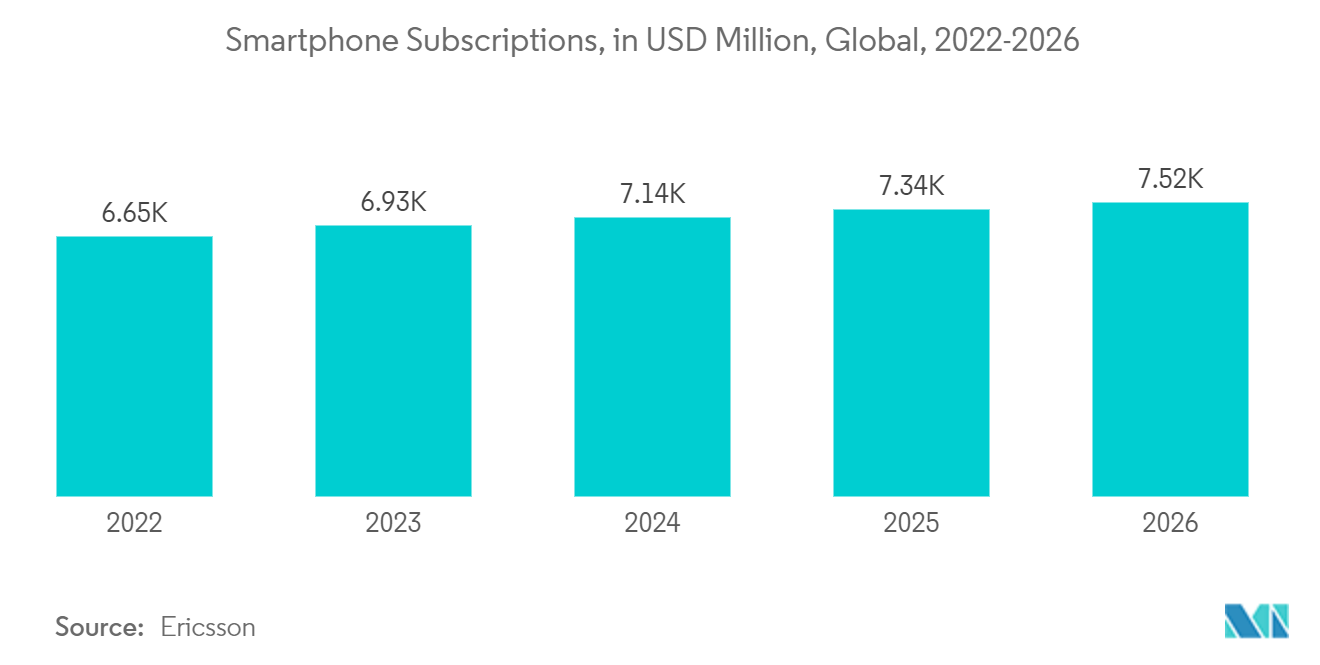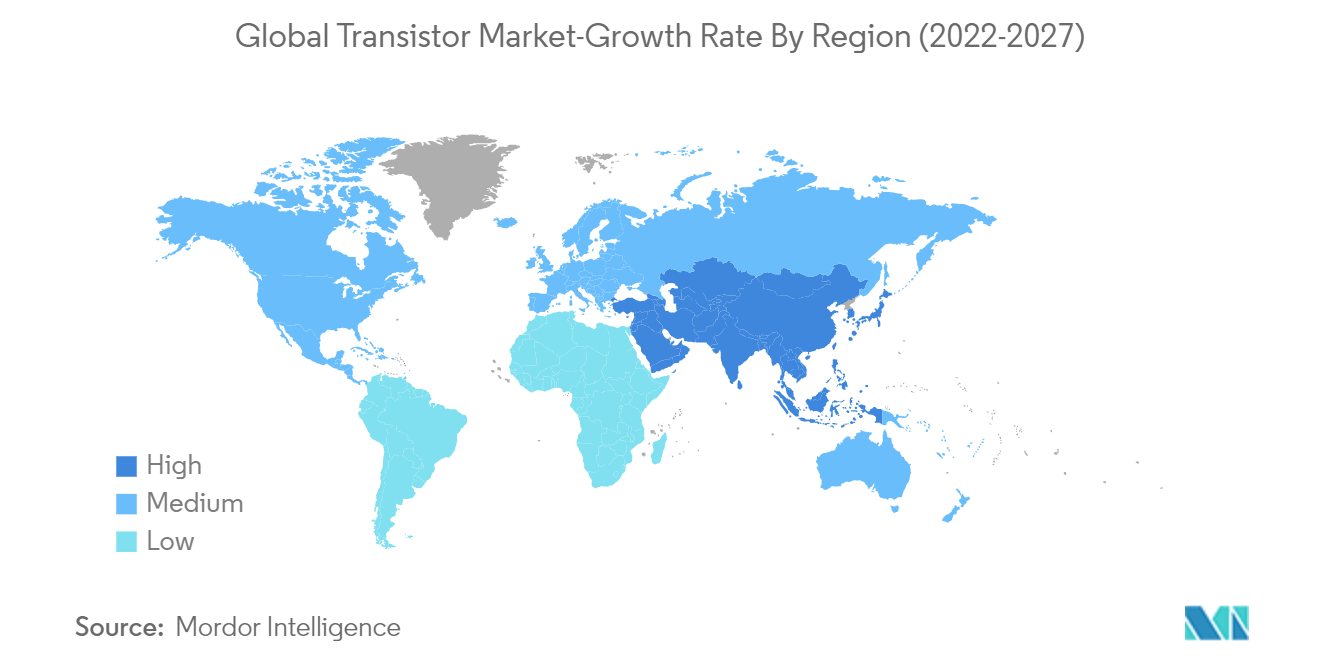Market Trends of Global Transistor Industry
This section covers the major market trends shaping the Transistor Market according to our research experts:
Proliferation of Consumer Electronics market and Increase in Use of Electronics in the Industrial Sector
The demand for consumer electronic products and the usage of electronics across industries has been increasing, directly or indirectly impacting the transistor market to growth. Transistors are used throughout consumer electronics applications such as reverse battery protection, switching power from different sources like an AC adapter and batteries, and turning offloads like backlighting when they are not needed.
- MOSFET is the most common type of transistor in digital circuits, with the potential to be integrated into a memory chip or microprocessor. MOSFET transistors are also commonly used in voltage-controlled circuit switches and have a high switching speed and a switching time in order of nanoseconds. It also has applications in low-power high-frequency converters. In addition to this, MOSFET can be used in amplifying circuits and in chopper circuits. In addition, it can be used as an inverter in electronic circuits.
- Advance medical devices are the key to modernizing the quality of care for patients. With the increase of the health care market, super-specialty hospitals are using ultra-modern reliable equipment in their treatment process. Non-intrusive imaging of the body empowers the specialist to perform operations while minimizing harm to neighboring tissue and organs. MOSFETs have been utilized in CT and MRI scanners to control the gantry on which the patient is leaning. They are also used in the power supply for X-ray and ultrasound machines.
- As the automobile industry has increasingly used electronic components and systems in recent years to make car bodies that are lighter in weight and achieve fuel efficiency, the use of electronic control units (ECUs) has advanced. The transition from power steering systems that use conventional oil pressure control to DC motors that use ECU and similarly in transitioning halogen bulbs to discharge bulbs that now use electronically ballast devices are also making the MOSFETs market grow because MOSFETs are used as the switching device in ECUs. Additionally, the trend of hybrid vehicles, Electric vehicles, and fuel-cell vehicles is indirectly making the transistor market grow.
- The current trend of miniaturization in size has led to an increase in the device density and upgraded the functional capacity of the chip. The ability to increase the number of devices in the chip influences the performance of the complete system while reducing the cost of each transistor. The decreased channel length of a smaller MOSFET can achieve lower equivalent resistance and higher current flow. MOSFET manufacturers utilize the copper clip gull-wing package technology to achieve a smaller size while maintaining maximum functionalities. These advanced MOSFETs are generally used in solenoid control, motor control, and DC/DC power conversion, with the 80V portfolio aimed explicitly at engine management and LED lighting applications.
- The MOSFET revolutionized the world during the information age. Its high density enables a computer to exist on a few small IC chips rather than filling a room and later making possible digital communications technology such as smartphones. The increase in demand for smaller IC chips for hardware manufacturers and the need for updated smartphones and laptops drive the MOSFET market to grow.

Asia-Pacific to Witness a Significant Growth
- Asia-Pacific is the fastest growing market for transistors because of the region's developing economy. China, Japan, South Korea, and India are the major stakeholders in this growing market. An increase in demand for consumer electronics, electric vehicles, smart devices, and wearables in the region is driving the growth of the transistors market.
- China accounts for 30% of global manufacturing because more than 50 000 companies' have tier-1 suppliers in China. With the global demand for electronic products, the demand will increase for the entire supply chain. Because of this, the transistor market in China will grow.
- In order to increase the EV charging network, the central government has allocated Rs 1,300 crore in the FAME (Faster Adoption and Manufacturing of Hybrid and Electric Vehicles) scheme. Further, the government has proactively amended guidelines for charging infrastructure development. This will create a positive impact on the transistor market to grow because of the need for electronic devices in the infrastructural development for EV service stations.
- As factories become increasingly automated, robotic solutions are finding usage across the full spectrum of applications. Japanese industrial robot maker Fanuc will make its most significant investment in China, pouring 26 billion yen ($240 million) into fortifying its Shanghai plant. The outlay will be made through a joint venture operated with local player Shanghai Electric Group. This automation will also indirectly help the transistors market to grow in the region.
- In addition, the Make in India program has attracted many global electronics companies to set up manufacturing plants in India. The Indian government confirmed it had received proposals from five companies to establish electronic chip and display manufacturing plants with an investment of INR 1.53 trillion. This will make India a global producer of transistors-embedded electronic chips. By this, the transistor market will grow in the APAC region.

